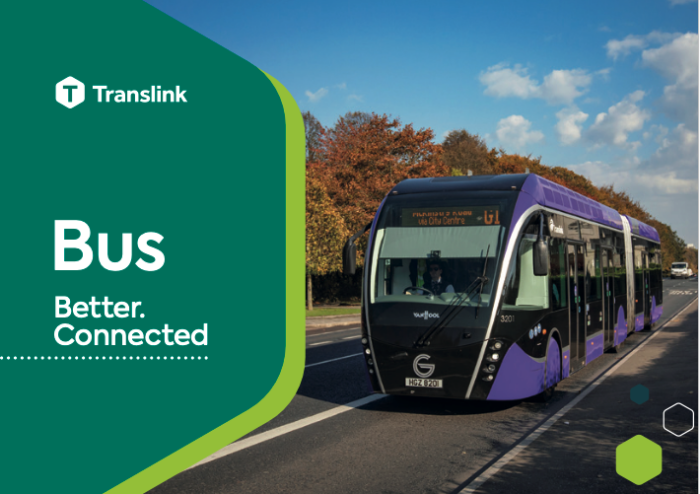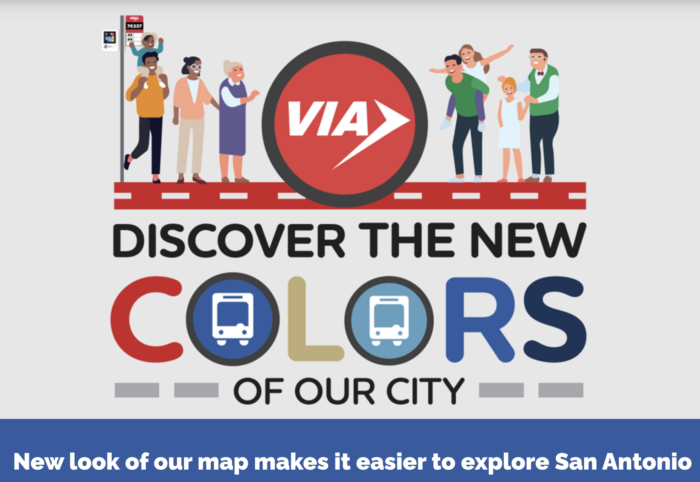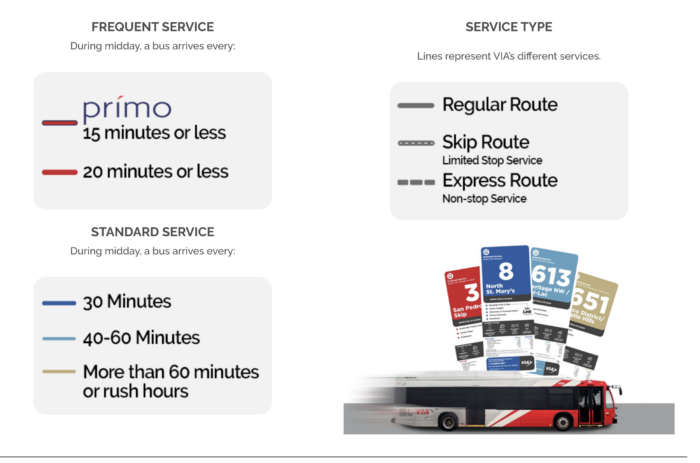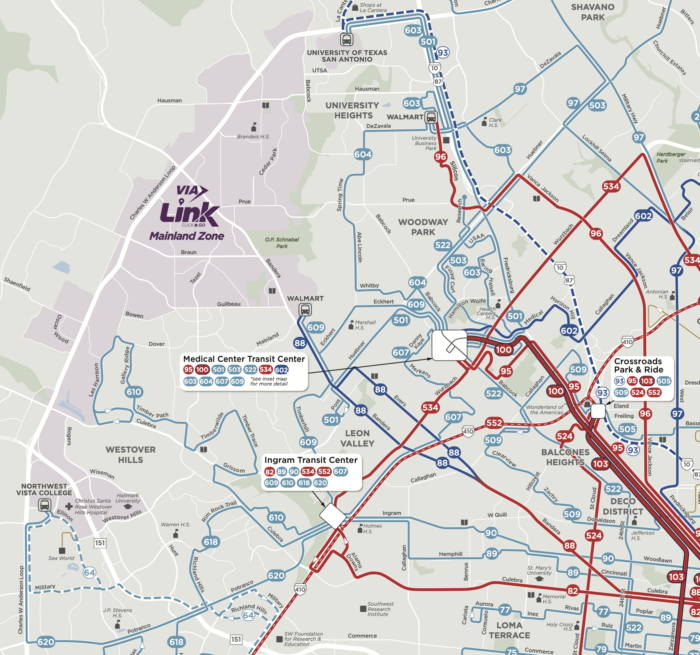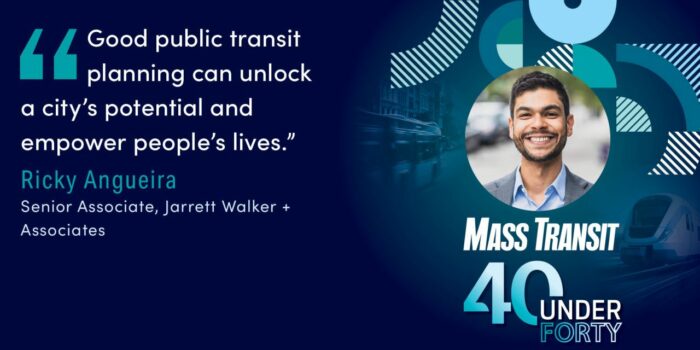In the San Francisco Bay Area, the regional transportation planning body, the Metropolitan Transportation Commission (MTC), has launched a major effort to improve the coordination between the region’s 27 transit agencies. One element of this, just unveiled, is a regional standard for transit network maps. The goal is to have all of the region’s maps evolve toward the same style, so that it’s easier to explore the entire region’s network.
MTC has now released the first sketches of the design standard, which you can find starting on the 20th slide of this document. I’m generally delighted. The recommendations look very much like what I’ve been promoting for years: reds to denote high frequency (15 minutes or better) and less prominent colors for lesser frequencies. They 0bserve that three major transit agencies in the region already do this.
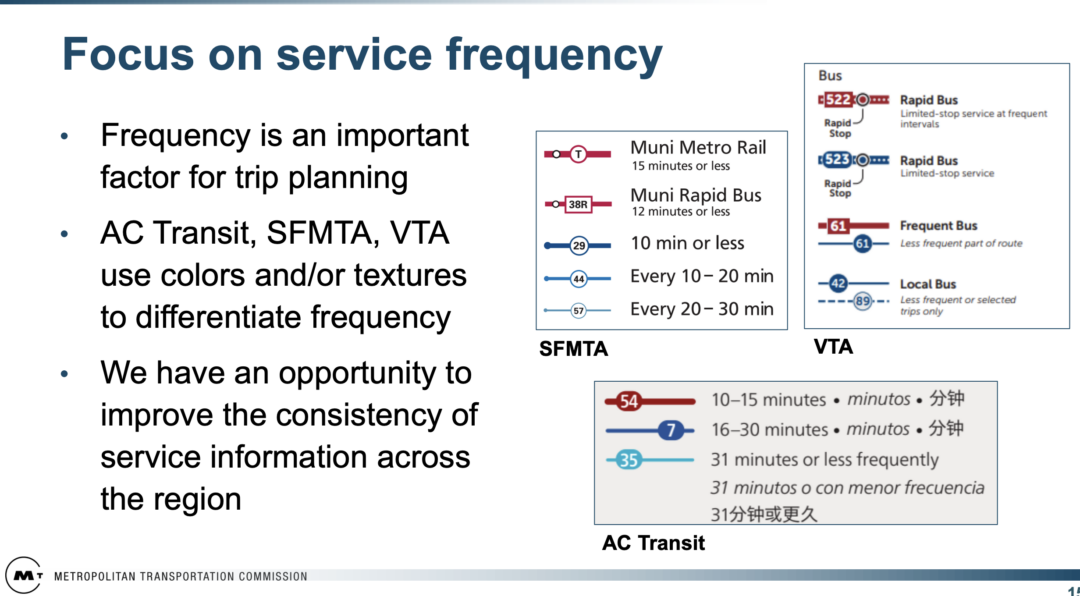
We’re flattered! We drew AC Transit’s map, and probably influenced the other two, as we helped San Francisco MTA (SFMTA) with service branding and also led the redesign of the VTA network, both in the mid 2010s. Our study mapping for our VTA network redesign was all in this style.
Here are the proposed colors of the regional standard:
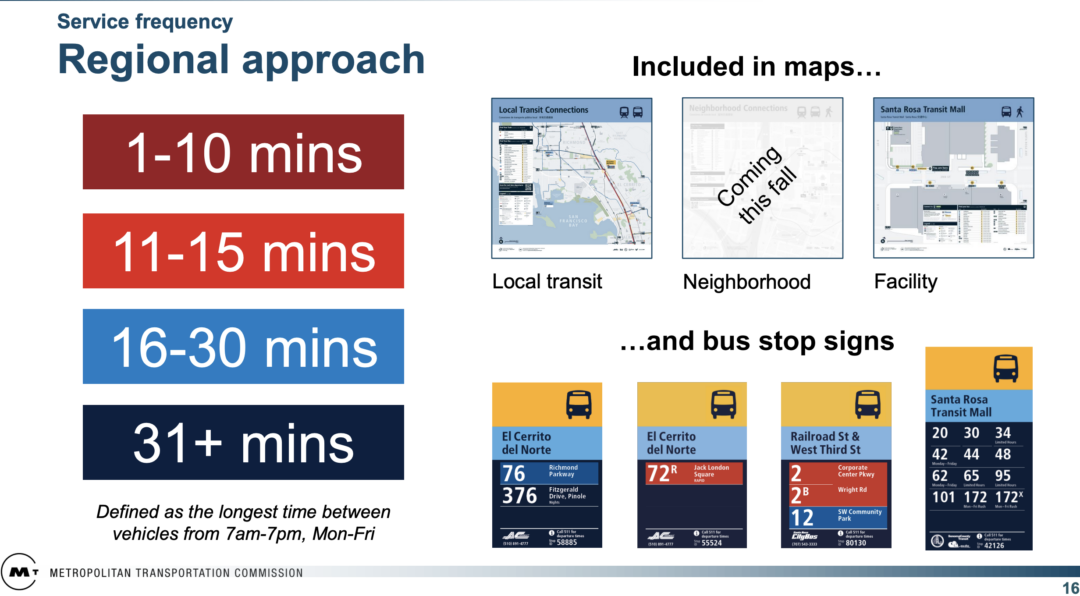
In our maps we use those reds with those meanings, but I’m puzzled by the two blues. To me, that darker blue is more prominent and eye catching than the light blue, so shouldn’t it represent the higher frequency? In all of our firm’s maps, we use pale blue to represent a lower frequency than dark blue, but I’m curious if others disagree. Here is our public-facing map of San Antonio, for example.
Finally, whenever you use color to show frequency, you have the problem of what happens when the frequency changes along a line, often because of branching. The draft MTC standard shows this example for where a red line, representing the combined frequency from two overlapping routes, separates into two blue lines:
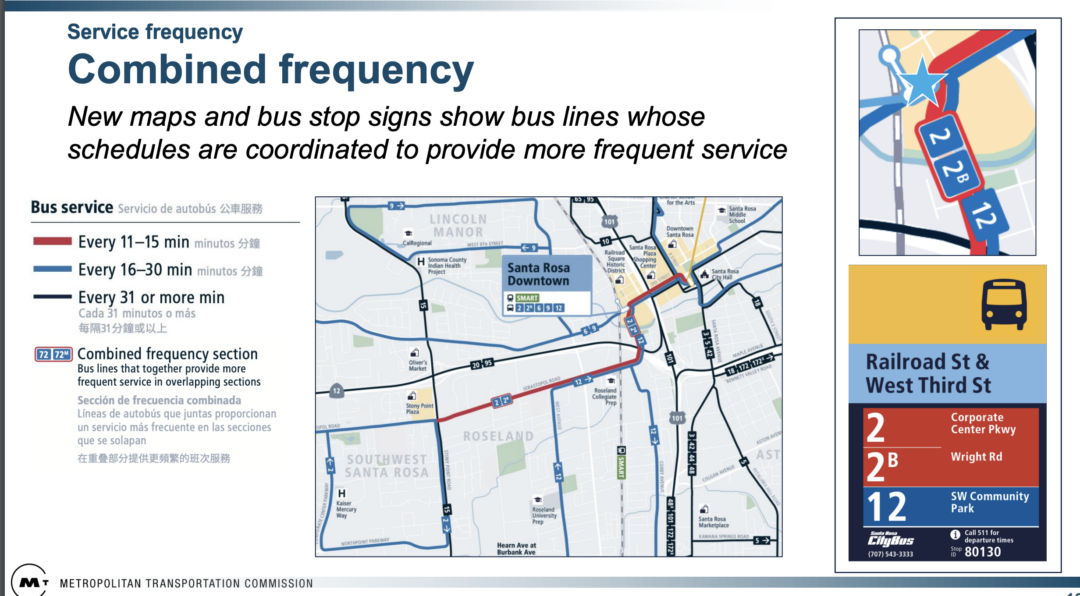
We’ve learned from long experience that most people need more help understanding that the route continues even as the color changes, mostly because people have seen many other maps where colors distinguish the routes from each other. So we always show a fade from one color to the other, as in this San Antonio example where Route 28 separates and rejoins:
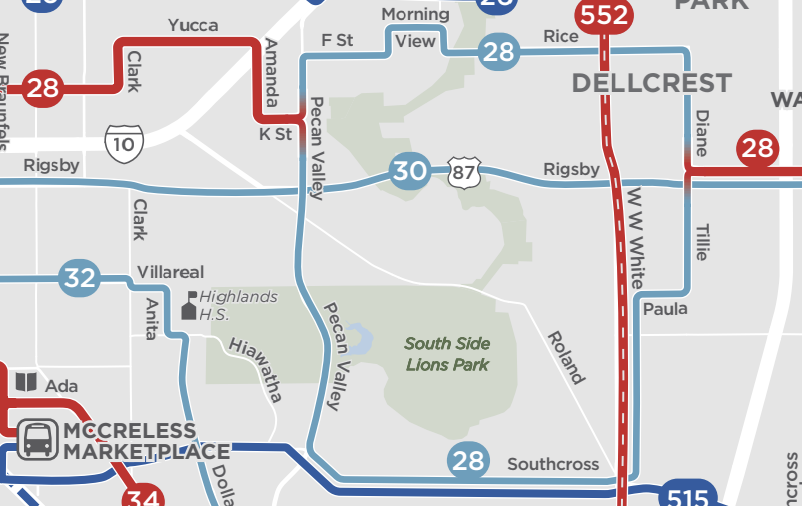
We also make sure there’s a legend item clarifying this:

So anyway, that’s what we know about transit mapping. We hope MTC thinks further about these details before imposing a regional standard.
So if you’re in the Bay Area, and you want to share your own comments with MTC, this page has an email address to write to. Click “Public Engagement and Staff Contact” partway down the page. But this is a great initiative!
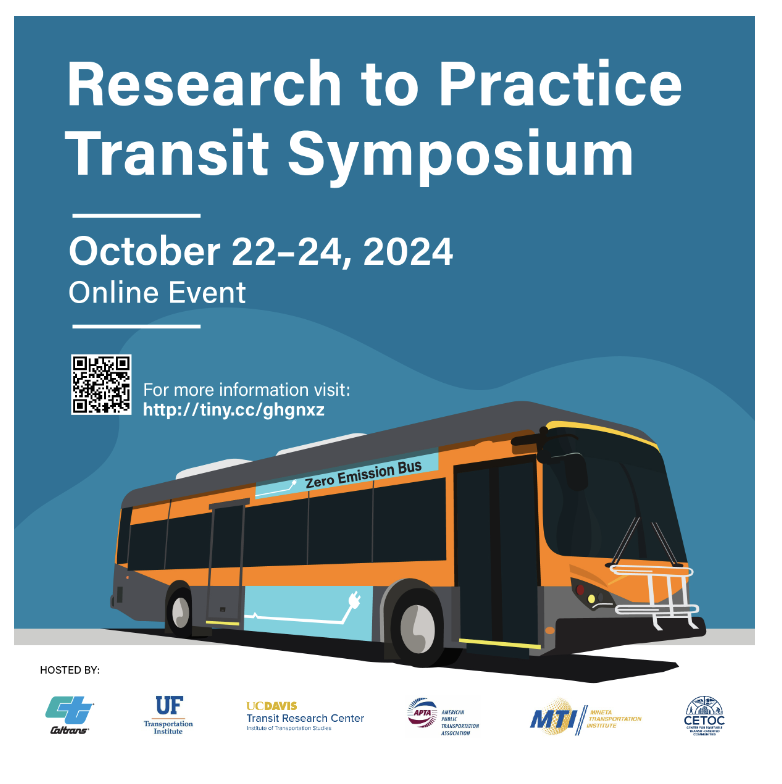 The 2024 Transit Research to Practice Symposium is a two day virtual event (October 22-24) with many interesting panels devoted to the challenge of making academic research more relevant to the daily practice of transit planning and management. It’s many sponsors include the University of Florida Transportation Institute, the University of California at Davis Institute for Transportation Studies, and the California Department of Transportation.
The 2024 Transit Research to Practice Symposium is a two day virtual event (October 22-24) with many interesting panels devoted to the challenge of making academic research more relevant to the daily practice of transit planning and management. It’s many sponsors include the University of Florida Transportation Institute, the University of California at Davis Institute for Transportation Studies, and the California Department of Transportation.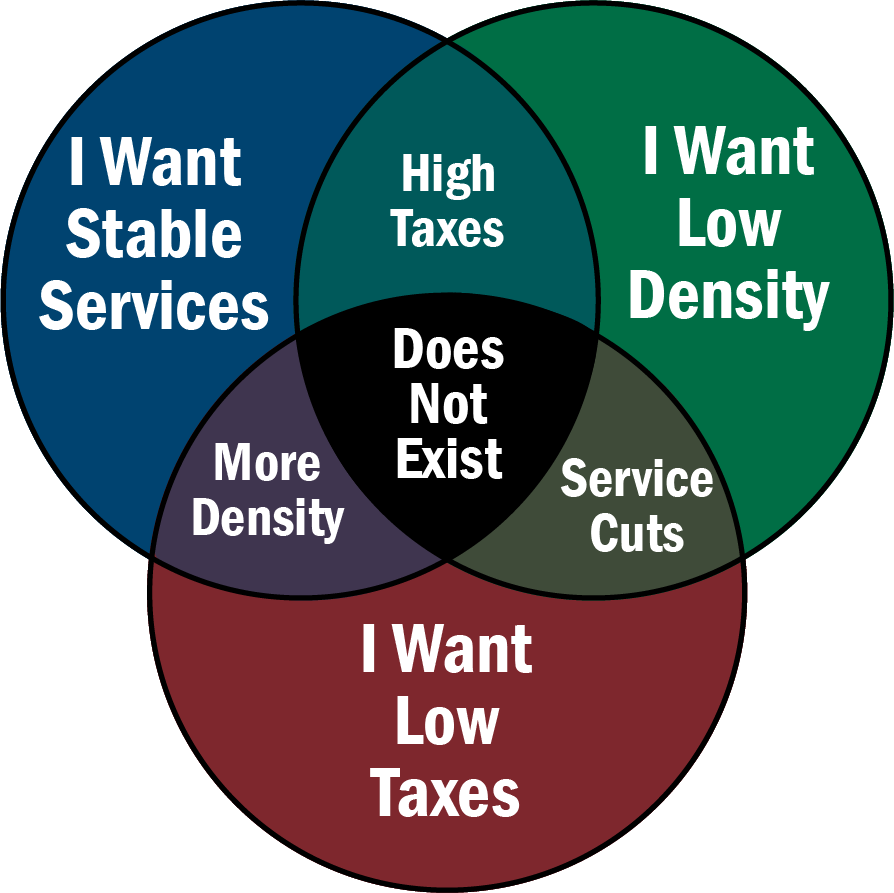





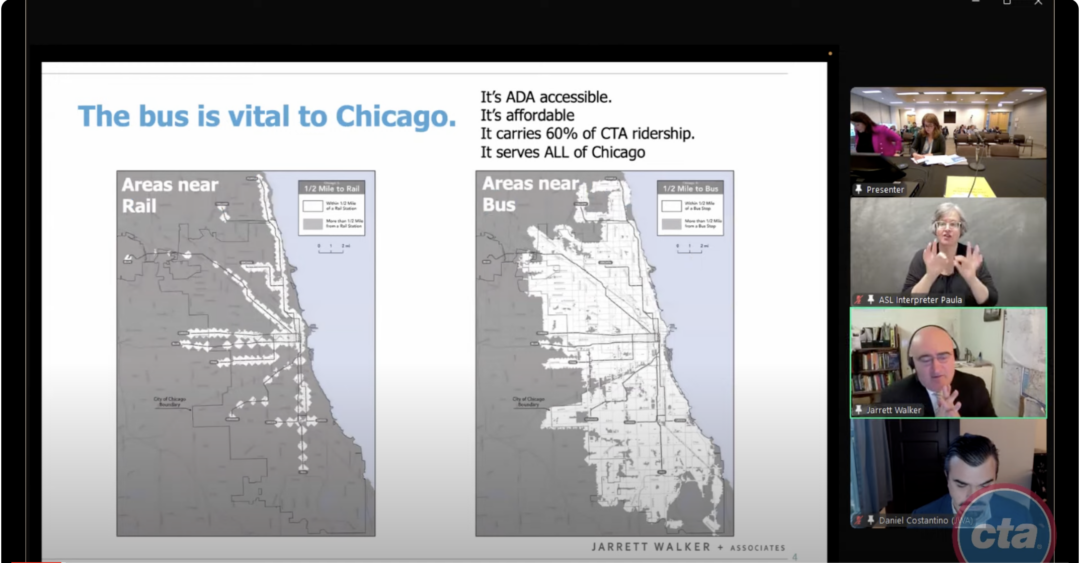
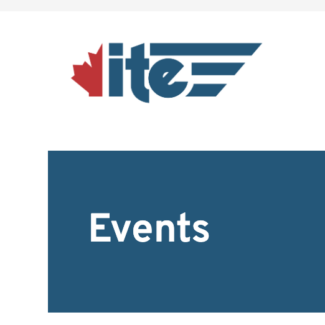 The next webinar about the new edition of my book is
The next webinar about the new edition of my book is 
